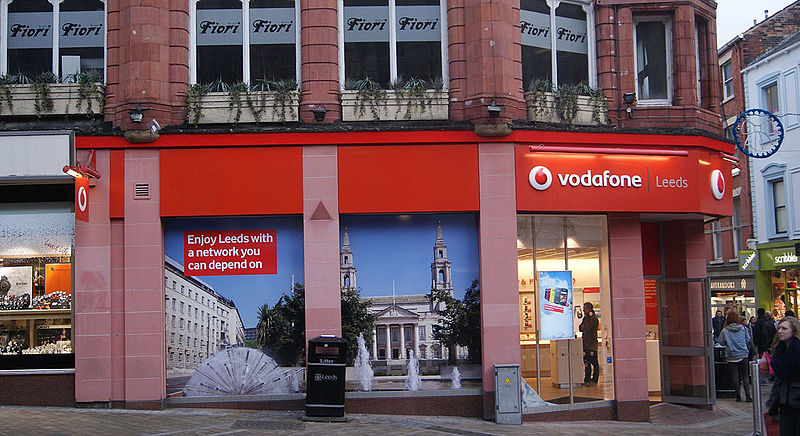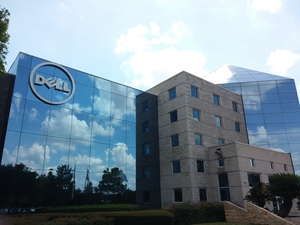After years of talking about it, the telecoms industry is finally getting its act together to take advantage of the opportunity posed by Open RAN (radio access network), writes business technology journalist Antony Savvas.
After moves announced by industry heavyweights Vodafone and MTN this week, both Europe and Africa are set to get their first commercial Open RAN networks to help roll-out 5G and other services, thanks to a flurry of prominent partners coming together to make it happen.
Doing away with the proprietary and singular technology stacks from the few telecoms hardware companies, Open RAN is designed to make it easier, cheaper and more efficient to roll-out new communications services that can be flexibly scaled in response to customer demand.
It does this by disaggregating the hardware from the software to allow service providers to mix and match the technology solutions they prefer, doing away with all-Nokia / Ericsson systems or all-Huawei options, for instance.
Frozen out
The fact that Huawei has been frozen out of many networks around the world for political reasons makes Open RAN even more important, as relying on fewer choices for hardware / software from single vendors potentially makes the roll-out of services more expensive.
In Vodafone’s case, the operator has brought together Dell Technologies, NEC, Samsung, Wind River, Capgemini Engineering and Keysight Technologies to help establish one of the largest Open RAN networks in the world.
The move builds on Vodafone’s Open RAN lab in Newbury, UK and its planned digital skills hubs in Malaga, Spain and Dresden in Germany.

Vodafone believes the move will spark other large-scale Open RAN launches and “spearhead the next wave of digital transformation across Europe”.
Vodafone’s initial focus will be on 2,500 sites in the UK, working with partners to extend 4G and 5G coverage to more rural places across the South West of England and most of Wales, and moving into urban areas in a later phase. The partners will then move on to continental Europe.
As Vodafone confirms, Open RAN will “boost the digital economy by stimulating greater tech innovation from a wider pool of vendors, bringing much needed diversity to the supply chain”.
Africa
This effort is being emulated in Africa too through MTN, to serve areas where it is critical to cut communications costs and allow relatively poor countries to facilitate the data connectivity that can potentially create many more opportunities for their citizens.
Indeed, MTN says Open RAN plays into its ‘Ambition 2025: Leading digital solutions for Africa’s progress’ strategy.
The firm says it expects to roll-out Open RAN by the end of 2021 in collaboration with its newly announced partners that include Altiostar, Mavenir, Parallel Wireless, TechMahindra and Voyage.
MTN said it first rolled out “open-source technology” in 2019 to improve rural coverage. “This was in line with our belief that everyone deserves the benefits of a modern connected life,” says MTN.
To date, it has deployed over 1,100 commercial sites in more than 11 countries using open-source systems, that have facilitated “cost-effective deployments in unconnected areas”.
While the components of Open RAN are not free, of course, MTN confirms the open interfaces and flexibility that are part of Open RAN is key.
Charles Molapisi, MTN Group chief technology and information officer, says Open RAN “diversifies the vendor landscape, disrupts the cost flow and removes dependencies on proprietary suppliers” – allowing operators to use generic hardware and open interfaces through a “Lego architecture”.
In efforts to drive Open RAN standardisation, MTN is participating in Facebook’s Telecom Infra Project.
Dell Technologies

In a separate development when it comes to partnership, Dell Technologies’ new infrastructure solutions, services and open ecosystem of partners are designed to help telecom operators “modernise their networks, unlock innovation and create new revenue opportunities” at the evolving edge, said Dell.
Like the above alliances they also make it easier for CSPs to mix and match the technologies that are the most suitable to roll-out new services to end customers.
Analyst house IDC says that as organisations across all industries look to drive new value with edge technologies, it projects that the number of new operational processes deployed on edge infrastructure will grow from less than 20% today to over 90% in 2024.
“CSPs are aiming to transform their businesses and networks to support this enormous growth and benefit from the edge opportunities ahead,” says IDC.
Daryl Schoolar, an analyst at Omdia, adds, “Operators are making critical investments in updating their networks for 5G and re-evaluating their legacy systems. As communication networks disaggregate, an open ecosystem of hardware and software vendors is forming to support this transformation.”
He says CSPs need strategic partners to help organise the ecosystem, provide validated solutions and take responsibility for deployment and operating outcomes.
Dell’s Project Metalweaver architecture is designed to enable CSPs to easily select, autonomously deploy and manage thousands of multi-vendor compute, network and storage devices across multiple locations.
It supports solutions from partners including VMware, Red Hat, Affirmed Networks, CommScope RUCKUS, Intel Smart Edge, Mavenir and Nokia. Incidentally, like MTN, the Mavenir tie-in focuses on Open RAN support.
5G

All this partner activity comes as the scale-out of 5G continues to gather pace. According to the latest Ericsson Mobility Report, there will be over half a billion 5G subscriptions by the end of 2021.
The report says 5G remains on track to become the fastest adopted mobile generation in history, with subscriptions increasing at a rate of about a million per day.

5G subscriptions with a 5G-capable device grew by 70 million during the first quarter of 2021 and are forecast to reach 580 million by the end of this year.
With all those new services built around 5G to serve the needs of the Internet of Things (IoT), artificial intelligence (AI) and multi-access edge computing (MEC), for instance, operators are going to need as many meaningful partnerships as they can muster to make sure things work seamlessly, and profitably.
The author is Antony Savvas, a global freelance business technology journalist.
Comment on this article below or via Twitter: @VanillaPlus OR @jcvplus






